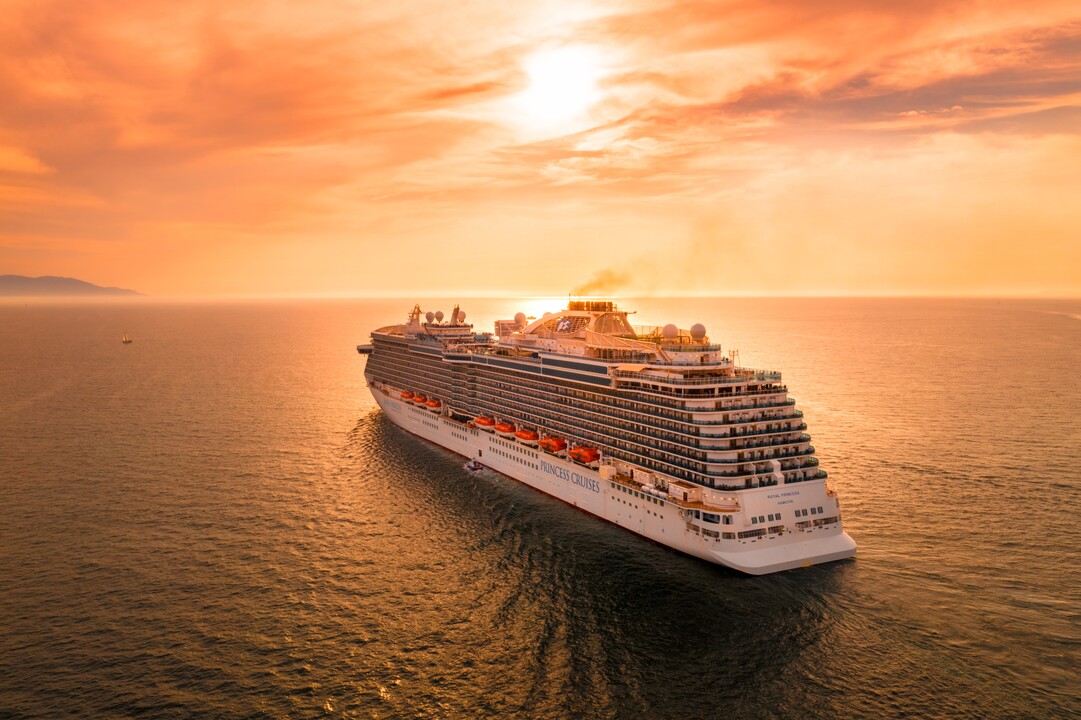
-
Table of Contents
Sailing towards sustainable horizons in cruise tourism.
Cruise tourism has gained significant popularity in recent years, offering travelers a unique and luxurious way to explore various destinations while enjoying onboard amenities and entertainment. However, this booming industry has also raised concerns regarding its environmental impact on the maritime ecosystem. As cruise ships navigate the world’s oceans, they generate substantial amounts of waste, contribute to air and water pollution, and pose a threat to marine life. In this article, we will delve into the environmental concerns associated with cruise tourism and explore potential solutions to mitigate its negative effects on our oceans.
The Impact of Cruise Tourism on Marine Ecosystems
Cruise Tourism: Navigating Environmental Concerns in Maritime Travel
The Impact of Cruise Tourism on Marine Ecosystems
Cruise tourism has become increasingly popular in recent years, with millions of people embarking on voyages to explore the world’s oceans. While this form of travel offers unique experiences and breathtaking views, it also raises concerns about its impact on marine ecosystems. As cruise ships navigate the seas, they leave behind a trail of environmental consequences that must be addressed.
One of the primary concerns associated with cruise tourism is the discharge of wastewater into the ocean. Cruise ships generate a significant amount of wastewater, including sewage, graywater, and oily bilge water. Without proper treatment, these discharges can harm marine life and degrade water quality. To mitigate this issue, many cruise lines have implemented advanced wastewater treatment systems to remove pollutants before releasing the water back into the ocean. However, there is still room for improvement, as some ships continue to discharge untreated wastewater.
Another environmental concern is the emission of air pollutants from cruise ships. These vessels rely on heavy fuel oil, which contains high levels of sulfur and other harmful substances. When burned, these fuels release sulfur dioxide, nitrogen oxides, and particulate matter into the atmosphere, contributing to air pollution and climate change. To address this issue, some cruise lines have started using cleaner fuels or installing exhaust gas cleaning systems, also known as scrubbers, to reduce emissions. However, the industry as a whole needs to make greater efforts to transition to more sustainable energy sources.
Cruise tourism also poses a threat to marine biodiversity through the introduction of invasive species. Ships can inadvertently transport non-native species in their ballast water, which is taken on board to stabilize the vessel. When this water is discharged in a different location, it can release these species into new ecosystems, where they can outcompete native species and disrupt the balance of the ecosystem. To combat this problem, international regulations require ships to treat their ballast water before discharge, but stricter enforcement and monitoring are necessary to prevent further introductions.
Furthermore, the physical damage caused by cruise ships anchoring in sensitive areas is a significant concern. Anchoring can destroy fragile coral reefs and seagrass beds, which serve as vital habitats for marine organisms. To minimize this impact, cruise lines are encouraged to use alternative methods, such as mooring buoys or shore-side facilities, to avoid damaging these delicate ecosystems. Additionally, cruise itineraries should be carefully planned to avoid areas of high ecological importance.
In conclusion, while cruise tourism offers a unique way to explore the world’s oceans, it also raises significant environmental concerns. The discharge of wastewater, emission of air pollutants, introduction of invasive species, and physical damage to marine ecosystems are all issues that must be addressed. Cruise lines have taken steps to mitigate these impacts, but more can and should be done. Stricter regulations, improved technologies, and greater awareness among travelers are necessary to ensure that cruise tourism can coexist with the preservation of marine ecosystems. By navigating these environmental concerns, the industry can continue to provide unforgettable experiences while safeguarding the health of our oceans for future generations.
Sustainable Practices in Cruise Tourism: Balancing Luxury and Environmental Responsibility
Cruise tourism has become increasingly popular in recent years, with millions of people embarking on luxurious voyages across the world’s oceans. However, this surge in maritime travel has raised concerns about its impact on the environment. As a result, the cruise industry has been under pressure to adopt sustainable practices that balance luxury with environmental responsibility.
One of the main environmental concerns associated with cruise tourism is the emission of greenhouse gases. Cruise ships are known to emit large amounts of carbon dioxide, which contributes to climate change. To address this issue, many cruise lines have started investing in cleaner technologies. For instance, some ships now use liquefied natural gas (LNG) as fuel, which significantly reduces carbon emissions compared to traditional diesel fuel. Additionally, cruise lines are exploring the use of solar and wind power to further minimize their carbon footprint.
Another environmental concern is the disposal of waste generated on board cruise ships. With thousands of passengers and crew members on a single ship, the amount of waste produced can be staggering. To tackle this issue, cruise lines have implemented advanced waste management systems. These systems include onboard recycling facilities, wastewater treatment plants, and even incinerators that convert waste into energy. By implementing these sustainable practices, cruise lines are able to minimize their impact on the environment and ensure that waste is properly managed.
Furthermore, the preservation of marine ecosystems is a crucial aspect of sustainable cruise tourism. Cruise ships often visit pristine coastal areas and marine reserves, which are home to diverse and fragile ecosystems. To protect these environments, cruise lines have implemented strict guidelines and protocols. For example, ships are required to use designated routes to avoid sensitive areas such as coral reefs. Additionally, cruise lines have partnered with local conservation organizations to support research and conservation efforts. By working together, the cruise industry and environmental organizations can ensure that these precious ecosystems are preserved for future generations to enjoy.
In addition to these specific measures, cruise lines are also taking a broader approach to sustainability. Many companies have established sustainability departments or appointed sustainability officers to oversee their environmental initiatives. These departments are responsible for developing and implementing strategies to reduce the overall environmental impact of cruise operations. They work closely with suppliers and partners to ensure that sustainable practices are integrated throughout the entire supply chain.
Moreover, cruise lines are increasingly engaging with passengers to raise awareness about environmental issues. Onboard educational programs and activities are designed to inform and inspire passengers to make more sustainable choices during their cruise. From recycling and energy conservation to responsible wildlife viewing, these initiatives aim to empower passengers to become more environmentally conscious travelers.
In conclusion, the cruise industry is navigating the environmental concerns associated with maritime travel by adopting sustainable practices. From reducing carbon emissions to implementing advanced waste management systems, cruise lines are taking significant steps to minimize their impact on the environment. Additionally, the preservation of marine ecosystems and raising awareness among passengers are key priorities for the industry. By balancing luxury with environmental responsibility, cruise tourism can continue to thrive while ensuring a sustainable future for our oceans.
Addressing Waste Management Challenges in Cruise Tourism
Cruise tourism has become increasingly popular in recent years, with millions of people embarking on maritime adventures to explore different destinations around the world. However, this surge in cruise travel has also raised concerns about its impact on the environment. One of the major challenges faced by the cruise industry is waste management, as these floating cities generate a significant amount of waste that needs to be properly handled.
Cruise ships are like small cities on water, accommodating thousands of passengers and crew members. With such a large population on board, it is no surprise that waste generation is a significant issue. From food waste to plastic bottles, and from sewage to hazardous materials, cruise ships produce a wide range of waste streams that need to be managed effectively.
One of the primary concerns in waste management on cruise ships is the disposal of food waste. With multiple restaurants and dining options on board, cruise ships serve an abundance of meals every day. This results in a substantial amount of food waste that needs to be properly handled to prevent environmental pollution. Many cruise lines have implemented strategies to reduce food waste, such as offering smaller portion sizes and encouraging passengers to only take what they can eat. Additionally, some ships have implemented composting systems to turn food waste into nutrient-rich soil, which can be used in onboard gardens or donated to local communities at port stops.
Another significant challenge in waste management on cruise ships is the disposal of plastic waste. Plastic bottles, straws, and other single-use items are commonly used on board, contributing to the global plastic pollution problem. To address this issue, many cruise lines have taken steps to reduce their plastic footprint. Some have eliminated single-use plastic items altogether, while others have implemented recycling programs to ensure that plastic waste is properly managed. Additionally, some cruise lines have started using biodegradable or compostable alternatives to traditional plastic products.
Sewage and wastewater management is another critical aspect of waste management on cruise ships. With thousands of people on board, the amount of sewage generated can be significant. To prevent pollution of marine ecosystems, cruise ships are equipped with advanced wastewater treatment systems that remove contaminants before the water is discharged into the ocean. These systems use a combination of physical, chemical, and biological processes to treat the wastewater to meet strict environmental standards.
Furthermore, hazardous materials generated on board, such as cleaning agents, paints, and batteries, pose a unique challenge in waste management. Cruise ships must adhere to strict regulations regarding the handling, storage, and disposal of hazardous materials to prevent environmental contamination. Many cruise lines have implemented comprehensive waste management plans that include proper storage, labeling, and disposal procedures for hazardous materials. Additionally, crew members receive training on the safe handling and disposal of these materials to ensure compliance with regulations.
In conclusion, waste management is a significant concern in cruise tourism, and the industry has taken steps to address these challenges. From reducing food waste to eliminating single-use plastics and implementing advanced wastewater treatment systems, cruise lines are making efforts to minimize their environmental impact. However, continuous improvement and innovation are necessary to navigate the environmental concerns associated with cruise tourism effectively. By adopting sustainable practices and investing in new technologies, the cruise industry can contribute to the preservation of our oceans and ensure a more sustainable future for maritime travel.In conclusion, cruise tourism is facing significant environmental concerns in maritime travel. The industry’s rapid growth has led to increased pollution, waste generation, and damage to marine ecosystems. Efforts are being made to mitigate these issues through the implementation of stricter regulations, adoption of sustainable practices, and the development of eco-friendly technologies. However, more needs to be done to ensure the long-term sustainability of cruise tourism and minimize its impact on the environment.









